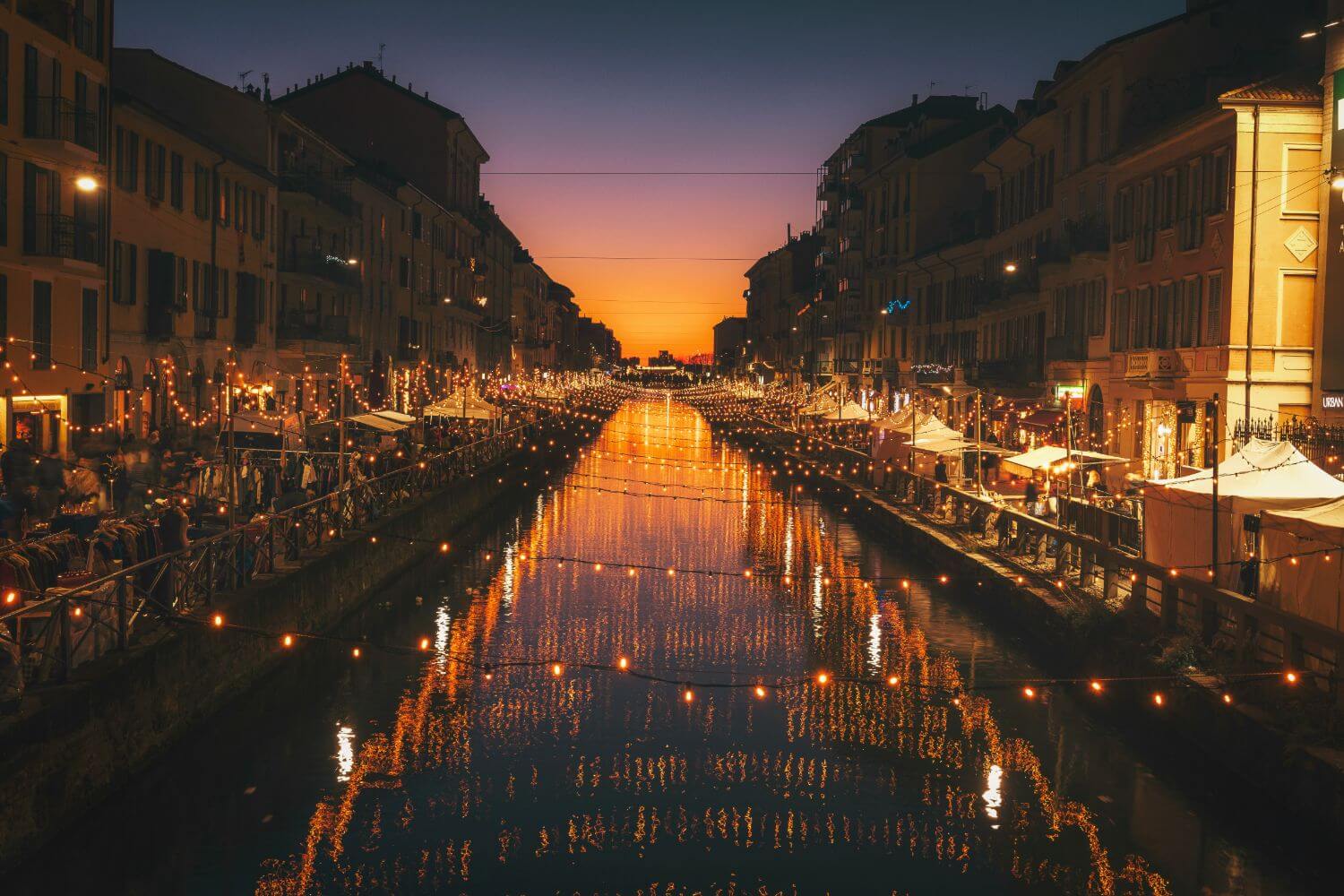Northern Italy is like a magical storybook come to life. Picture towering snow-capped mountains that look like they belong in a fairy tale, crystal-clear lakes that sparkle like jewels, and charming medieval cities where every corner tells a story. This region combines the best of Italian culture with influences from Austria and Switzerland, creating something truly special.
Whether you’re dreaming of floating through Venice’s canals, hiking through alpine meadows dotted with wildflowers, or sipping wine in ancient hilltop towns, Northern Italy has it all. The most beautiful places in Northern Italy range from dramatic mountain peaks to romantic lakeside villages, making it one of Europe’s most stunning destinations.
Let’s take a journey through the prettiest places in Northern Italy that will leave you completely speechless.
1. The Dolomites
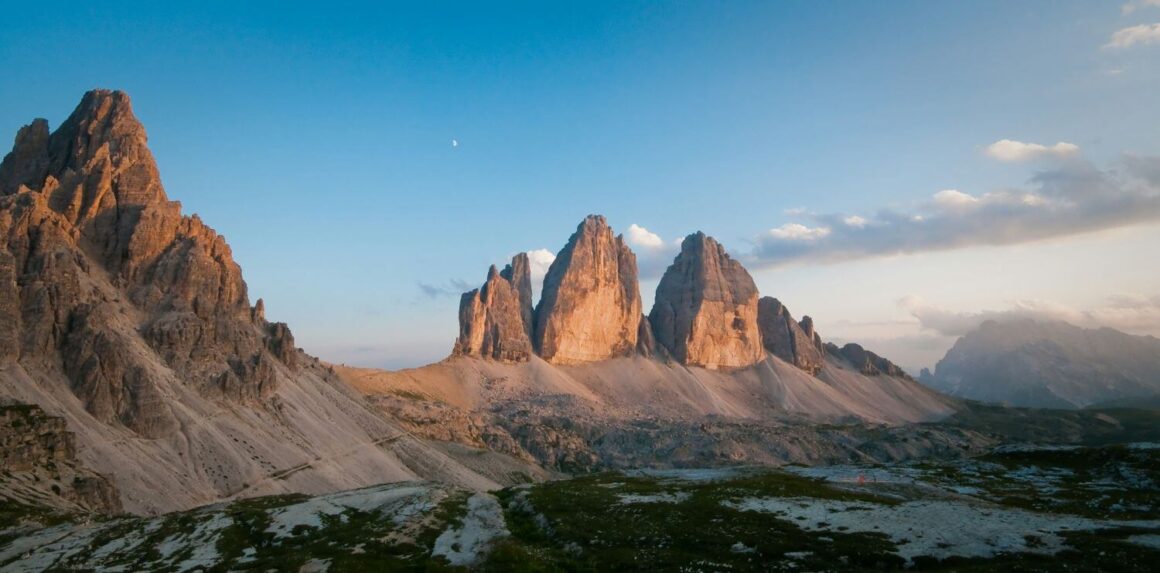
The Dolomites are the crown jewel of Northern Italy’s natural beauty. These incredible mountains rise like ancient cathedrals from the earth, their pale limestone faces glowing pink and orange during sunrise and sunset. The region is home to some of the most beautiful places in Northern Italy, each more breathtaking than the last.
Lago di Braies (Lake Braies) is often called the “Pearl of the Dolomites,” and once you see it, you’ll understand why. This emerald-green lake sits perfectly nestled between towering peaks, creating mirror-like reflections that look almost too perfect to be real. You can rent a wooden rowboat and glide across the calm waters, or take the easy walking trail that circles the entire lake.
Alpe di Siusi is Europe’s largest alpine meadow, and it’s pure magic. Rolling green hills stretch as far as the eye can see, dotted with traditional mountain huts and wildflowers. In spring and summer, over 800 different types of flowers bloom here, creating a natural carpet of colors. The views of the surrounding peaks, especially the distinctive Sassolungo, are absolutely incredible.
Seceda has become famous on social media for its dramatic jagged ridges that look like something from another planet. Take the cable car from Ortisei to reach this spectacular viewpoint. The sharp, knife-like peaks create one of the most photographed landscapes in all of Italy.
Tre Cime di Lavaredo are three massive stone towers that have become the symbol of the Dolomites. The hiking trail that circles these giants is challenging but rewarding, giving you 360-degree views of the surrounding wilderness.
Val di Funes is a picture-perfect valley where tiny churches sit in green meadows with the dramatic Odle peaks rising behind them. It’s one of those places that makes you feel like you’ve stepped into a painting.
The best base towns for visiting the Dolomites are Ortisei, Cortina d’Ampezzo, and Bolzano. Each has its own charm and puts you close to different parts of this mountain paradise.
2. Lake Como
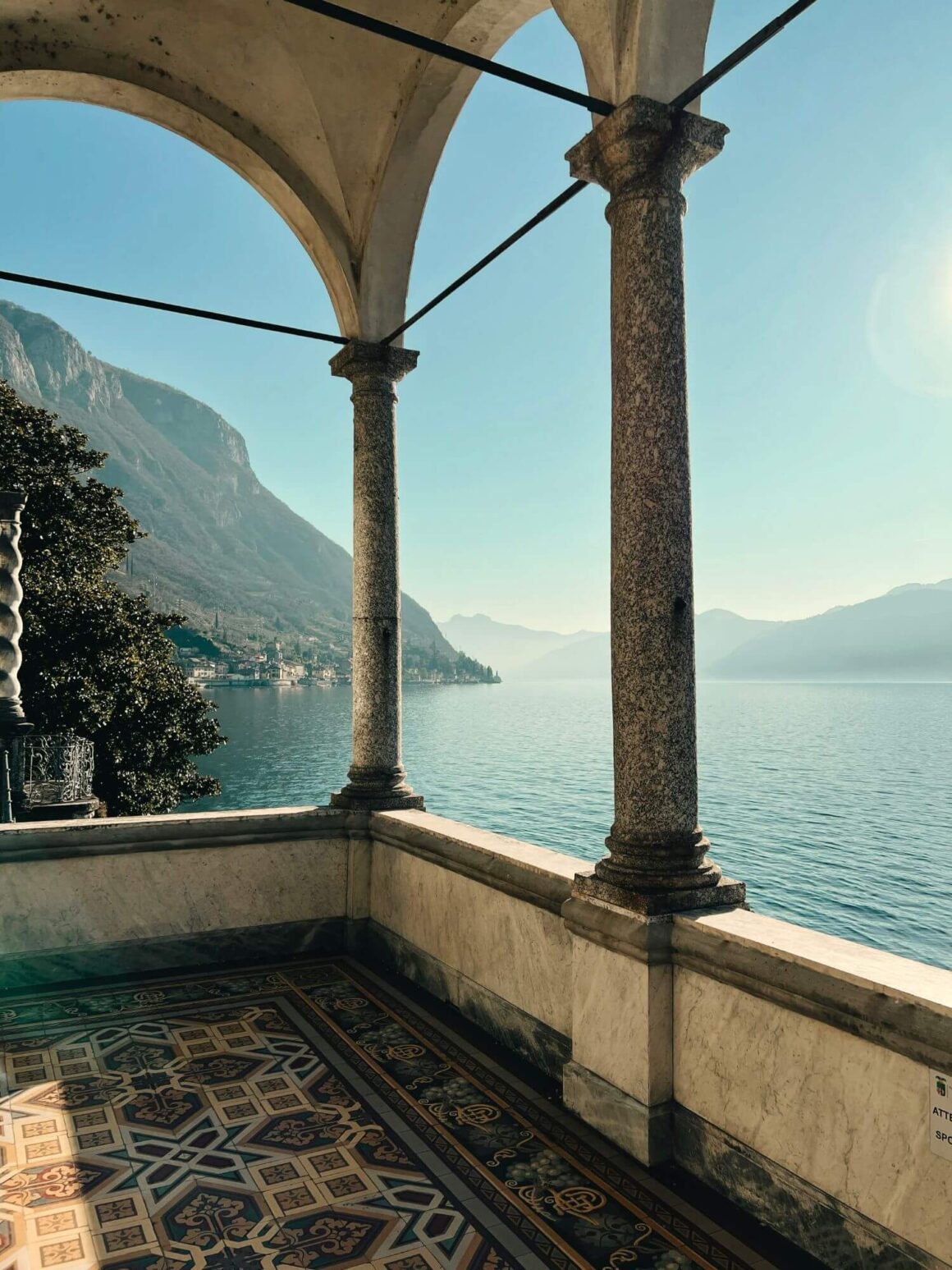
Lake Como is where Hollywood stars come to escape, and it’s easy to see why. This Y-shaped lake stretches between steep mountains and charming villages, creating some of the prettiest places in Northern Italy. The best way to experience Lake Como is by hopping on the ferries that connect the different towns.
Bellagio sits at the point where the lake splits into two arms, earning it the nickname “Pearl of the Lake.” The town tumbles down terraced hillsides, with colorful buildings, elegant villas, and perfectly manicured gardens. The views from Bellagio are stunning no matter which direction you look.
Varenna is a quieter alternative to busy Bellagio, with narrow cobblestone streets and houses painted in warm yellows and oranges. The lakefront promenade is perfect for evening strolls, and the gardens of Villa Monastero are absolutely gorgeous.
Villa del Balbianello is one of the most photographed spots on the lake. This 18th-century villa sits on a wooded peninsula, and its terraced gardens have been featured in movies like Star Wars and Casino Royale. The villa is only accessible by boat or by walking a scenic trail.
The mountains surrounding Lake Como create a dramatic backdrop that changes throughout the day. Morning mist often clings to the peaks, while afternoon sun lights up the water like liquid gold. Many celebrities have homes here, but you don’t need to be famous to feel like royalty in this stunning setting.
3. Cinque Terre
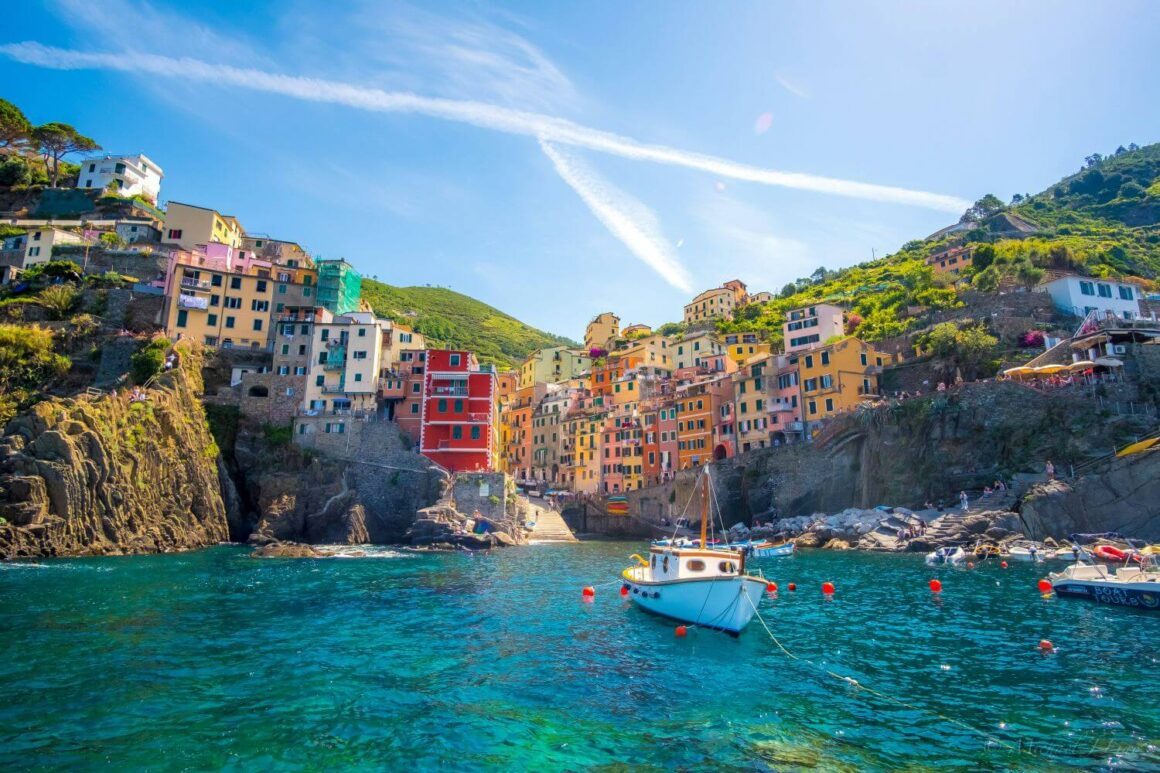
The Cinque Terre is a collection of five tiny fishing villages that cling impossibly to the cliffs along the Mediterranean coast. Monterosso al Mare, Vernazza, Corniglia, Manarola, and Riomaggiore are connected by hiking trails and a train line that tunnels through the mountains.
Each village has its own personality. Monterosso al Mare is the largest and has the only real beach. Vernazza is often considered the most beautiful, with its natural harbor and medieval castle. Corniglia sits highest on the cliffs and requires a steep climb to reach. Manarola produces some of the sweetest wine in Italy. Riomaggiore is famous for its colorful houses that seem to tumble down the hillside into the sea.
The hiking trails between villages are part of the magic. The paths wind through terraced vineyards and olive groves that have been carefully maintained for over 1,000 years. The views of the Mediterranean and the dramatic coastline are incredible from every angle.
The best time to visit is during the shoulder seasons when the weather is still warm but the crowds are smaller. Summer can be extremely busy, but the villages maintain their charm even when packed with visitors.
4. Verona
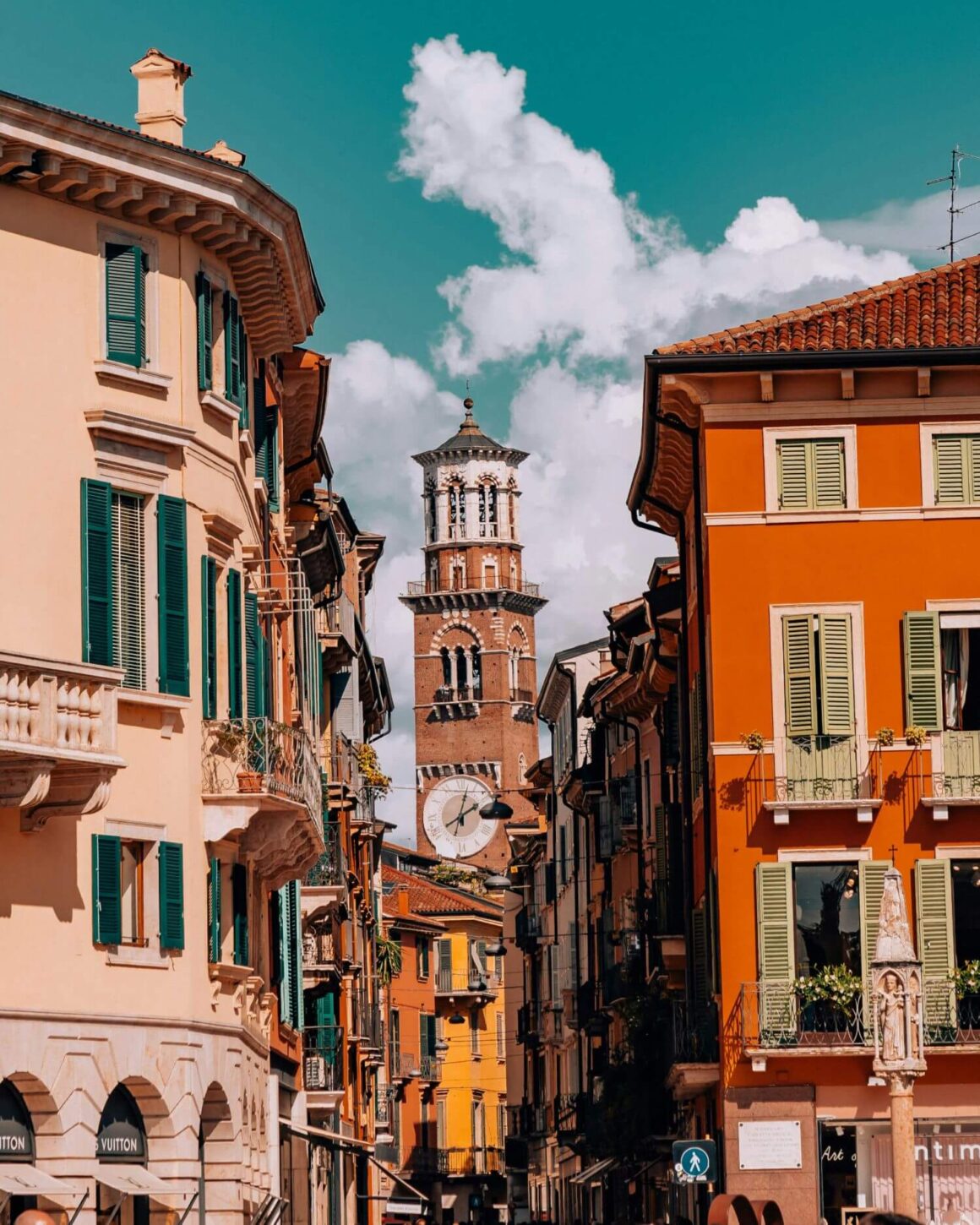
Verona is one of Italy’s most romantic cities, made famous by Shakespeare’s Romeo and Juliet. But beyond the literary connections, this is simply one of the most beautiful places in Northern Italy. The city sits at the base of the Alps, surrounded by rolling hills covered in vineyards and olive groves.
Juliet’s balcony at Casa di Giulietta is the obvious must-see attraction. Whether or not you believe in the romance, the 14th-century building and its famous balcony are worth seeing. The courtyard walls are covered in love letters and graffiti from visitors around the world.
The Roman Arena is one of the best-preserved ancient amphitheaters in the world. During summer, it hosts incredible opera performances under the stars. Even if you don’t catch a show, the arena itself is magnificent.
Piazza delle Erbe is the heart of the old city, surrounded by frescoed buildings and filled with market stalls. The medieval atmosphere is perfectly preserved, and the square comes alive in the evenings when locals gather for aperitivo.
Castelvecchio is a 14th-century castle that houses an impressive art museum. The fortress itself is beautiful, and the bridge connected to it provides great views over the Adige River.
Verona’s food scene is fantastic, with cozy trattorias serving local specialties like risotto all’Amarone made with the region’s famous wine. The city feels authentically Italian while still being incredibly welcoming to visitors.
5. Venice
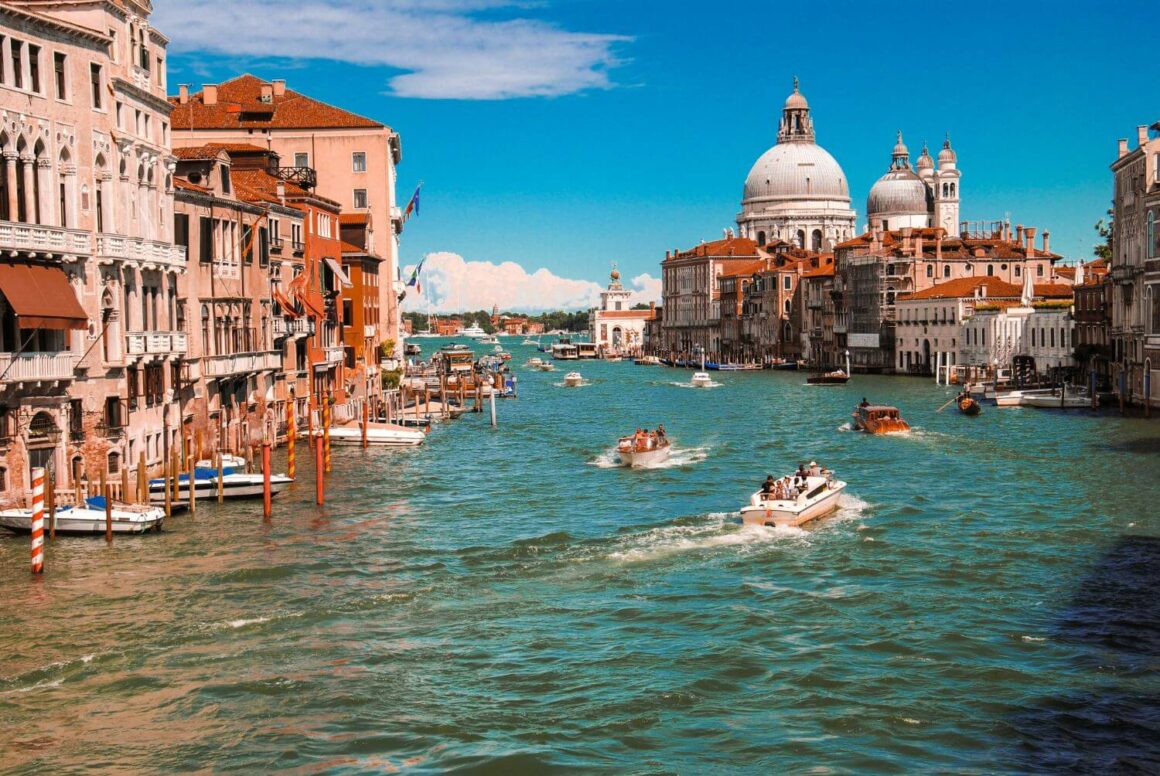
Venice needs no introduction. This floating city built on over 100 islands is unlike anywhere else on Earth. The most beautiful places in Northern Italy include many mountain and lake destinations, but Venice proves that human creativity can be just as stunning as nature.
St. Mark’s Square is the heart of Venice, surrounded by Byzantine and Gothic architecture that tells the story of the city’s incredible history. The Basilica of St. Mark is covered in golden mosaics that shimmer in the sunlight, while the Doge’s Palace shows off the wealth and power of the former Venetian Republic.
The Grand Canal is Venice’s main highway, and taking a vaporetto (water bus) ride along it is like traveling through a living museum. The Rialto Bridge is the most famous crossing point, and it’s always packed with people taking photos of the canal views.
Gondola rides are touristy but magical, especially at sunset when the light turns the water golden. The gondoliers still sing traditional songs as they navigate the narrow canals with incredible skill.
Cannaregio is one of Venice’s quieter neighborhoods, where you can see real Venetian life. Local kids play in the squares, laundry hangs from balconies, and small bacari (wine bars) serve cicchetti (small plates) to neighborhood regulars.
Day trips to Burano and Murano are highly recommended. Burano is famous for its brightly colored houses and intricate lace-making, while Murano is known for its glass-blowing traditions.
6. Milan

Milan is Italy’s fashion capital and economic powerhouse, but it’s also home to some incredible architecture and culture. This modern city successfully blends cutting-edge style with historic treasures.
The Duomo di Milano is one of the world’s most impressive Gothic cathedrals. The white marble facade is covered in thousands of statues and spires that reach toward the sky. You can take an elevator or climb stairs to the rooftop for amazing views over the city and, on clear days, all the way to the Alps.
Galleria Vittorio Emanuele II is a 19th-century shopping arcade that feels like a palace. The glass ceiling and mosaic floors are beautiful, and the luxury shops and historic cafes make it a perfect place to people-watch.
Sforza Castle is a massive Renaissance fortress that now houses several museums. The castle grounds are a peaceful escape from the busy city, and the art collections inside are world-class.
Milan’s Fashion Quadrilateral is where the biggest names in fashion have their flagship stores. Even if you’re not shopping, the window displays are like art exhibitions.
The aperitivo culture in Milan is fantastic. In the early evening, locals gather at stylish bars for drinks and small plates. The city’s restaurant scene is innovative and exciting, mixing traditional Italian flavors with international influences.
7. Bergamo
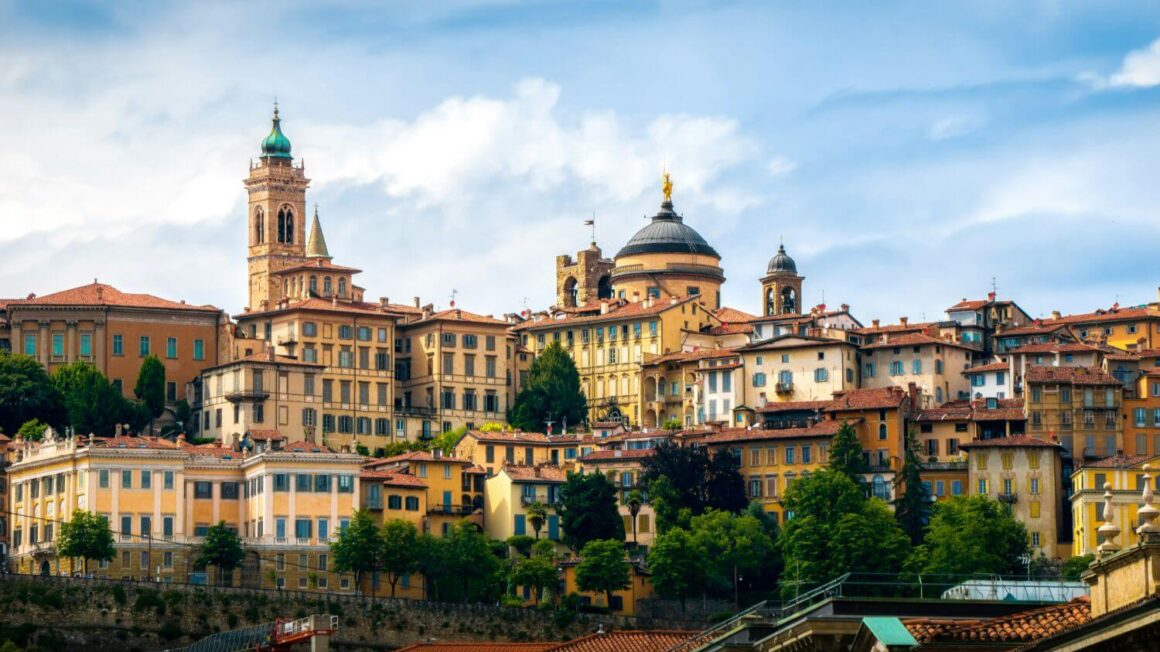
Bergamo is one of the most underrated cities in Northern Italy, and that’s exactly what makes it so special. This medieval gem is divided into two parts: the modern lower city and the historic upper city called Città Alta.
Città Alta is surrounded by 16th-century Venetian walls and feels like stepping back in time. The Piazza Vecchia is considered one of Italy’s most beautiful squares, surrounded by medieval and Renaissance buildings that create a perfect harmony.
The Colleoni Chapel is a masterpiece of Renaissance art, with its colorful marble facade and intricate decorations. Right next door, Santa Maria Maggiore looks plain from the outside but has one of the most spectacular interiors in Italy, covered in frescoes and tapestries.
A funicular railway connects the upper and lower cities, making it easy to travel between them. The ride itself is fun, and the views from the upper city are spectacular, stretching across the Po Valley to the Alps.
Bergamo has its own airport, so many visitors pass through without realizing what they’re missing. The city has excellent restaurants, charming hotels, and a relaxed atmosphere that’s hard to find in more touristy destinations.
8. Parma
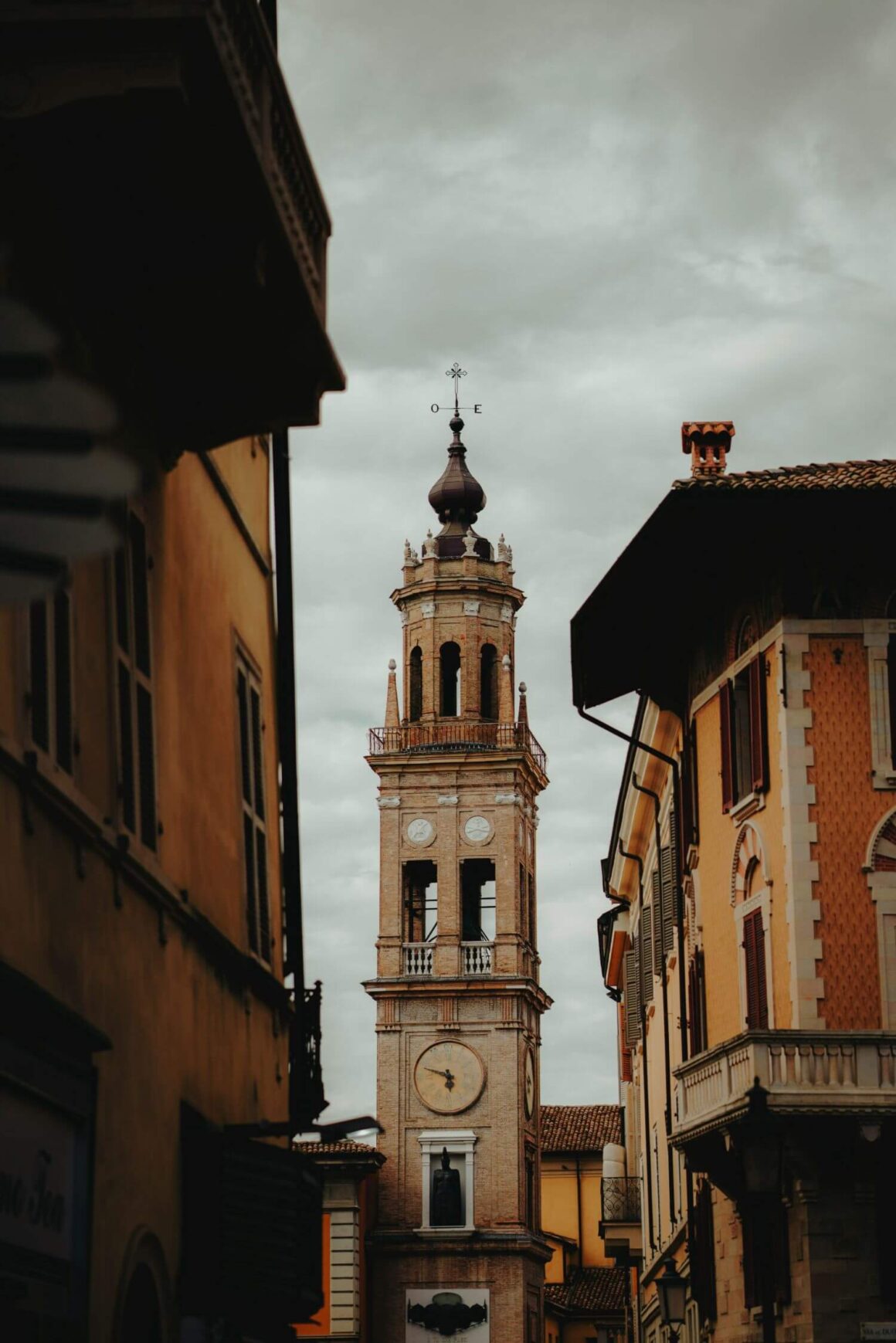
Parma is a food lover’s paradise and one of the prettiest places in Northern Italy. This elegant city in the Emilia-Romagna region is famous worldwide for two things: Parmigiano Reggiano cheese and Prosciutto di Parma ham.
The Parma Cathedral is absolutely stunning, with frescoes by Correggio that are considered masterpieces of Renaissance art. The dome painting is so beautiful that people often lie on the floor just to stare up at it.
The Baptistery is an octagonal building made from pink marble that looks like a precious jewel. The interior is covered in 13th-century frescoes that tell biblical stories in incredible detail.
Parmigiano Reggiano and Prosciutto di Parma tours are must-do experiences. You can visit the farms and factories where these world-famous foods are made, learning about traditions that haven’t changed for centuries. The tastings are incredible, and you’ll never look at supermarket cheese the same way again.
The Teatro Regio is one of Italy’s most important opera houses. Even if you don’t catch a performance, the building itself is beautiful, and opera is a huge part of Parma’s cultural identity.
The city’s cobblestone streets are perfect for wandering, lined with elegant shops, cozy cafes, and excellent restaurants. Parma feels authentically Italian without being overwhelmed by tourists.
9. Lake Garda

Lake Garda is Italy’s largest lake and one of the most beautiful places in Northern Italy. The lake stretches from the Alps in the north to the Po Valley in the south, creating diverse landscapes and microclimates.
Sirmione is famous for its thermal baths and the impressive Scaliger Castle that guards the entrance to the town. The peninsula extends into the lake, creating a fairy-tale setting with Roman ruins and olive groves.
Riva del Garda sits at the northern tip of the lake, surrounded by dramatic mountains. This is where you’ll find the best windsurfing and sailing, thanks to steady winds that blow down from the Alps.
Limone sul Garda is named for the lemon groves that grow on terraced hillsides above the town. The setting is incredibly romantic, with the yellow citrus fruits contrasting against the blue lake and dramatic cliffs.
Malcesine is home to a cable car that takes you up Monte Baldo, sometimes called the “Garden of Europe” for its incredible variety of plants and flowers. The views from the top stretch across the entire lake.
Lake Garda is perfect for active travelers. You can hike, bike, sail, windsurf, or simply relax on the beaches. The lake is also surrounded by excellent wineries producing light, fresh wines that pair perfectly with the Mediterranean-style cuisine.
10. Portofino
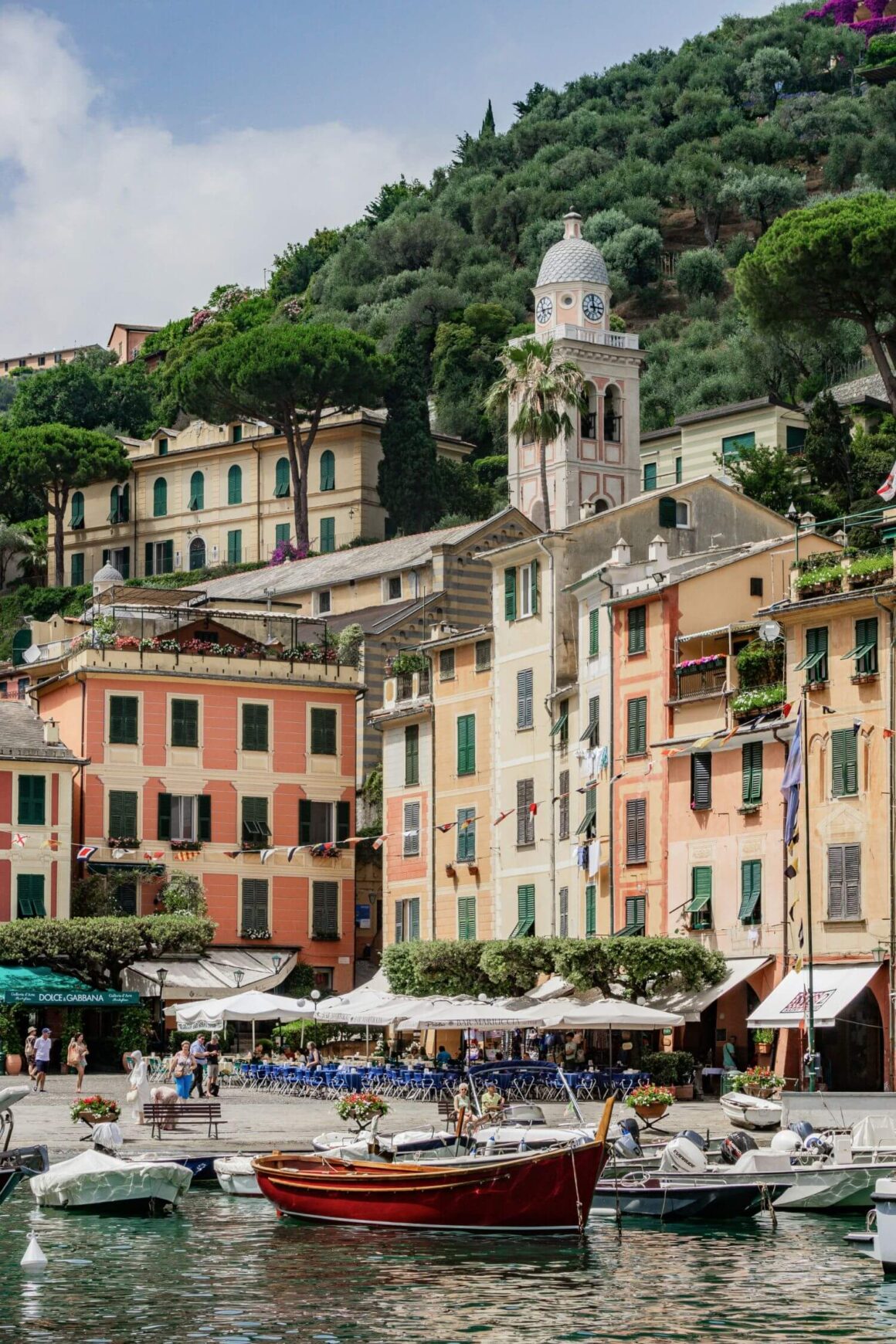
Portofino is the definition of exclusive elegance. This tiny fishing village on the Italian Riviera has become a playground for the rich and famous, but its natural beauty is accessible to everyone.
The pastel-colored houses that ring the harbor are picture-perfect, creating one of the most photographed scenes in Italy. The buildings seem to grow right out of the rocks, painted in warm yellows, oranges, and reds that reflect beautifully in the water.
Luxury yachts fill the tiny harbor, and the high-end boutiques that line the waterfront are like outdoor museums of fashion and jewelry. Even if you’re not shopping, window-shopping in Portofino is entertainment in itself.
Castello Brown is a 16th-century fortress that sits on a hill above the village. The castle houses a small museum, but the real attraction is the incredible views over the Mediterranean and the Ligurian coast.
The Christ of the Abyss is a bronze statue of Jesus that sits 50 feet underwater in the bay. It was placed there in 1954 and has become a popular diving site. You can see it from boats or, if you’re a diver, visit it underwater.
The Ligurian coastal hiking trails connect Portofino to other beautiful villages along the coast. The paths wind through Mediterranean vegetation and provide stunning views of the sea and cliffs.
11. Bologna
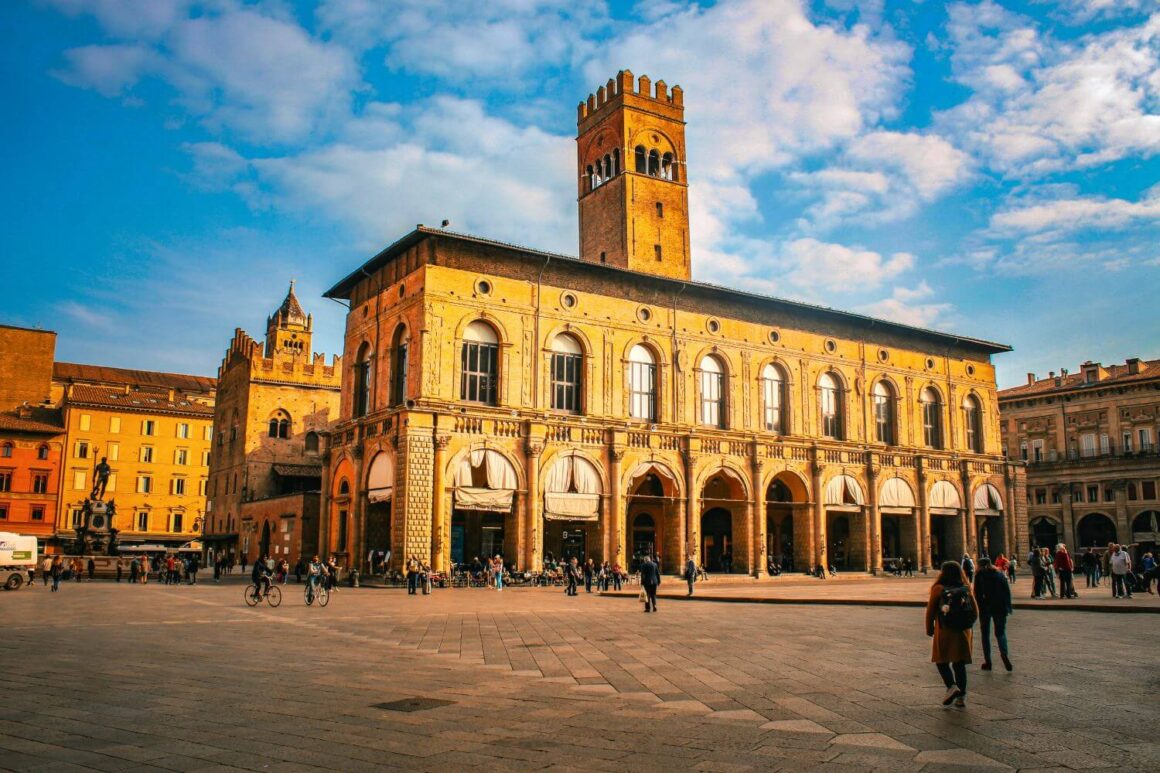
Bologna is known as “La Rossa” (The Red One) for its red brick buildings and “La Grassa” (The Fat One) for its incredible food. This university city is the capital of Emilia-Romagna and home to some of the prettiest places in Northern Italy.
The Asinelli Tower is one of two remaining medieval towers in the city. Climbing the 498 steps to the top is challenging, but the panoramic views over the red rooftops and surrounding hills are worth every step.
Piazza Maggiore is the heart of Bologna, surrounded by medieval palaces and the impressive Basilica of San Petronio. This unfinished Gothic church is massive and was originally planned to be larger than St. Peter’s in Rome.
Bologna’s porticoes are unique in the world. These covered walkways stretch for about 40 kilometers throughout the city, protecting pedestrians from weather and creating a distinctive architectural feature.
The city is the birthplace of Bolognese sauce and tortellini, and the food scene here is incredible. The covered markets are filled with local specialties, and the restaurants serve some of the best pasta in Italy.
Bologna has a young, energetic vibe thanks to its ancient university, which is the oldest in the world. The city manages to be both historic and modern, traditional and innovative.
12. Turin
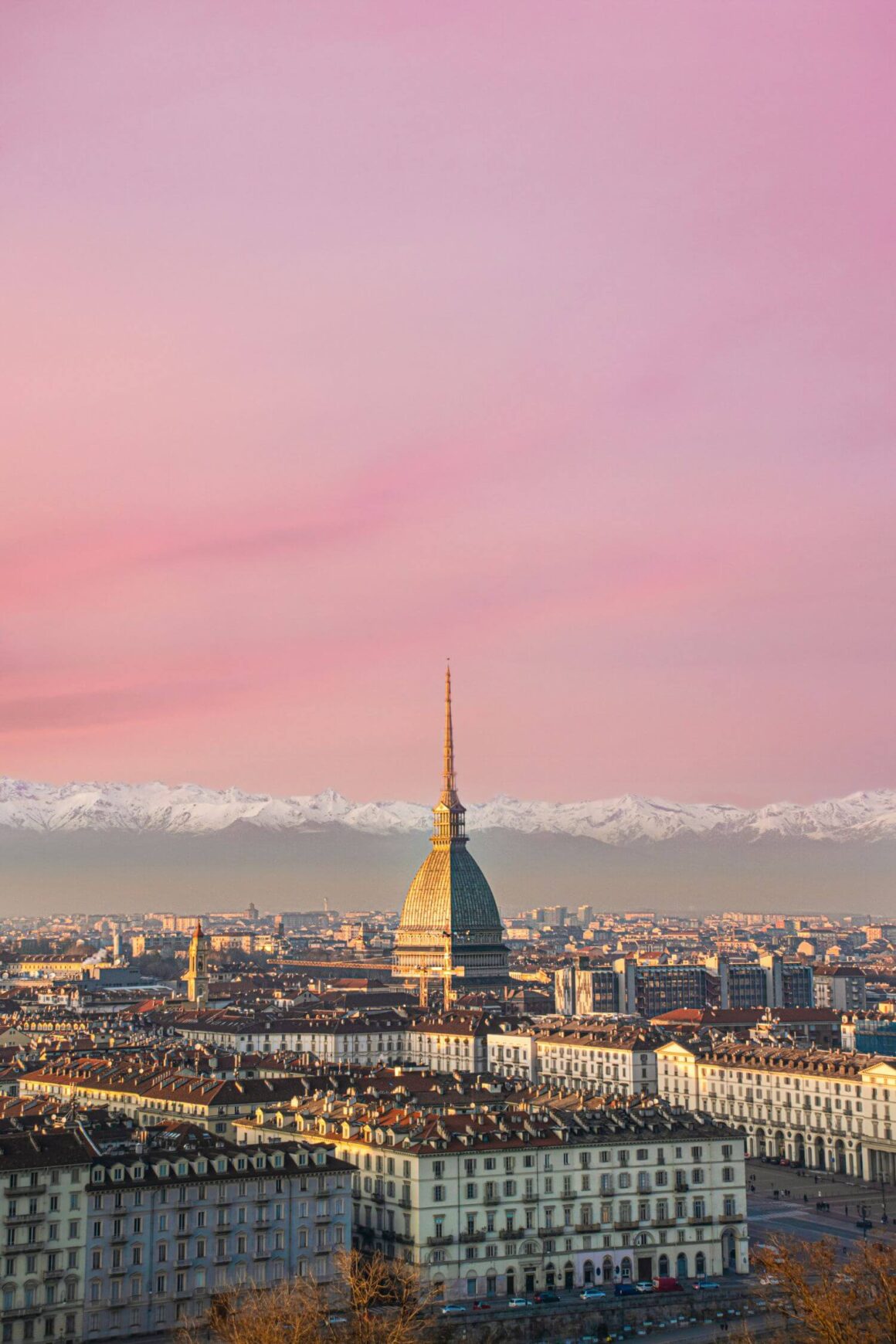
Turin is one of Italy’s most elegant cities, with wide boulevards, royal palaces, and a sophisticated atmosphere. This former capital of Italy sits at the foot of the Alps and has a unique blend of French and Italian influences.
The Mole Antonelliana is Turin’s most recognizable landmark, a 19th-century tower that houses the National Cinema Museum. The museum is fascinating, and the panoramic elevator ride to the top provides incredible views of the city and the Alps.
Palazzo Reale was the royal palace of the House of Savoy and is filled with opulent rooms, artwork, and royal apartments. The palace gardens are beautiful, and the entire complex shows off the wealth and power of Italy’s former royal family.
The Egyptian Museum in Turin houses the world’s second-largest collection of Egyptian artifacts, with mummies, statues, and treasures that rival those in Cairo.
Turin’s café culture is legendary. The city claims to have invented the bicerin, a layered coffee drink with chocolate and cream. The historic cafes are beautiful, with ornate interiors and a sophisticated atmosphere.
The chocolate traditions in Turin are incredible. The city is famous for gianduja, a chocolate-hazelnut mixture that inspired Nutella. The chocolate shops are like temples to cocoa, and the quality is exceptional.
13. Mantua

Mantua is a hidden gem that sits on three artificial lakes created in the 12th century. This Renaissance city was home to the powerful Gonzaga family and is filled with incredible art and architecture.
Palazzo Ducale is one of the largest palace complexes in Europe, with over 500 rooms filled with frescoes, tapestries, and artwork. The Camera degli Sposi, painted by Mantegna, is considered one of the masterpieces of Renaissance art.
Palazzo Te is a pleasure palace built for the Gonzaga family, famous for its incredible frescoes and optical illusions. The Room of the Giants is particularly spectacular, with paintings that seem to make the ceiling collapse.
The three artificial lakes that surround Mantua create a unique setting that’s both romantic and dramatic. You can take boat tours around the lakes or simply enjoy the views from the city’s bridges and waterfront.
Mantua’s historic old town is perfectly preserved, with medieval streets, Renaissance palaces, and charming squares. The city has a magical atmosphere, especially in the early morning when mist rises from the lakes.
The city has connections to Virgil, the ancient Roman poet who was born nearby. Romeo was also supposed to have been exiled here in Shakespeare’s play, adding to the city’s romantic reputation.
14. Ravenna
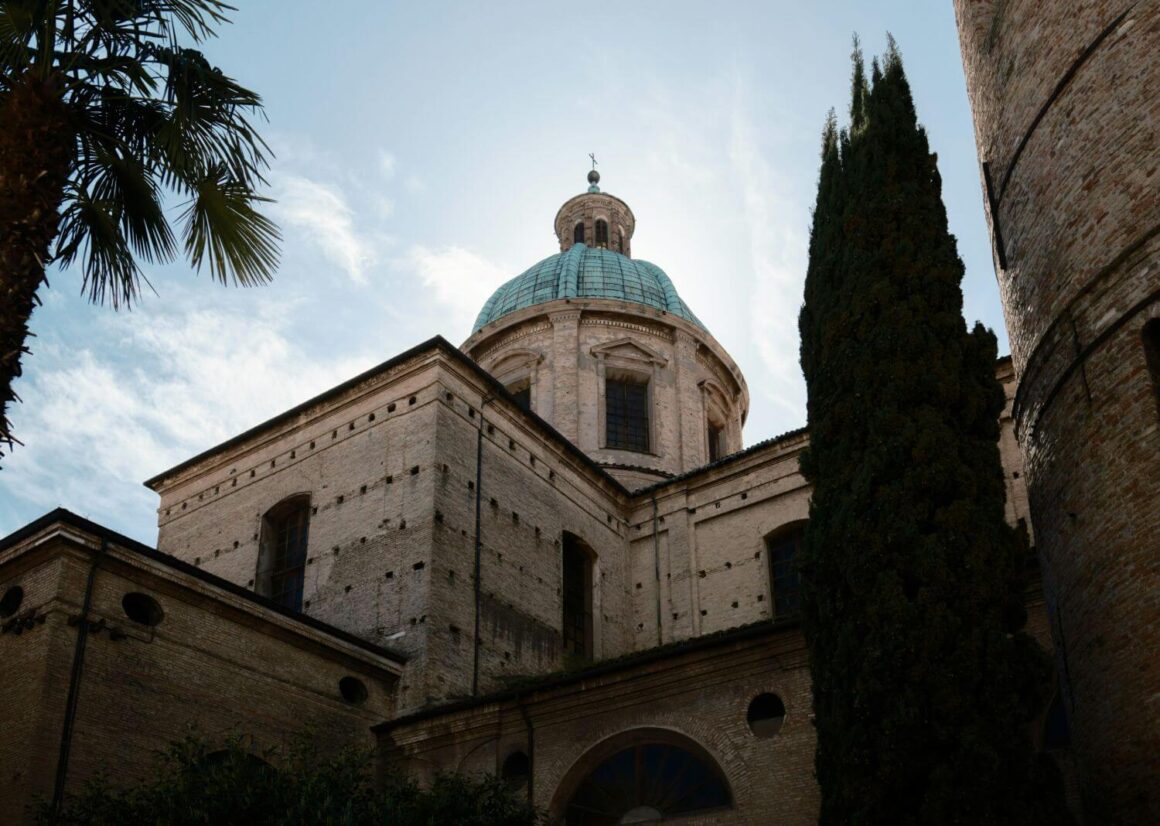
Ravenna is one of Italy’s best-kept secrets, home to the most incredible collection of ancient mosaics outside of Istanbul. This small city in Emilia-Romagna is an art lover’s dream and one of the most beautiful places in Northern Italy.
Basilica di San Vitale contains some of the most stunning 6th-century mosaics in the world. The images of Emperor Justinian and Empress Theodora are masterpieces of Byzantine art, with colors that remain vivid after 1,500 years.
The Mausoleum of Galla Placidia is small but contains some of the earliest Christian art in existence. The starry night ceiling is particularly beautiful, creating an atmosphere of peace and wonder.
Ravenna has eight historic monuments filled with ancient mosaics that tell the story of the city’s importance in the early Christian period. Each building is unique and contains treasures that most people have never seen.
Dante’s final resting place is in Ravenna, where the great poet spent his last years in exile. His tomb is simple but moving, and the city celebrates his memory with festivals and events.
Ravenna is a perfect alternative to Florence for travelers who want to see incredible Italian art without the crowds. The city is small enough to walk easily, and the mosaics are some of the most beautiful artwork you’ll ever see.
15. Genoa

Genoa is a gritty, authentic port city that combines maritime history with incredible architecture. This former maritime republic has one of the largest historic centers in Europe and a unique character that’s very different from other Italian cities.
Via del Campo and the surrounding medieval old town streets are a maze of narrow alleys, ancient churches, and hidden squares. The area can feel a bit rough around the edges, but that’s part of its authentic charm.
The Palazzo dei Rolli are a collection of Renaissance palaces that once housed visiting dignitaries. Many of these buildings are now museums, hotels, or private residences, but their elaborate facades are still impressive.
The Cathedral of San Lorenzo is famous for its distinctive black and white striped façade and the Chapel of St. John the Baptist, which supposedly contains the Holy Grail.
Palazzo Rosso and Palazzo Bianco house impressive art collections, including works by Van Dyck, Rubens, and other masters. The palaces themselves are as beautiful as the art they contain.
Genoa’s maritime heritage is everywhere, from the old port area to the Columbus House (though historians debate whether Columbus was actually born here). The city’s connection to the sea is still strong, and the port remains one of Italy’s most important.
